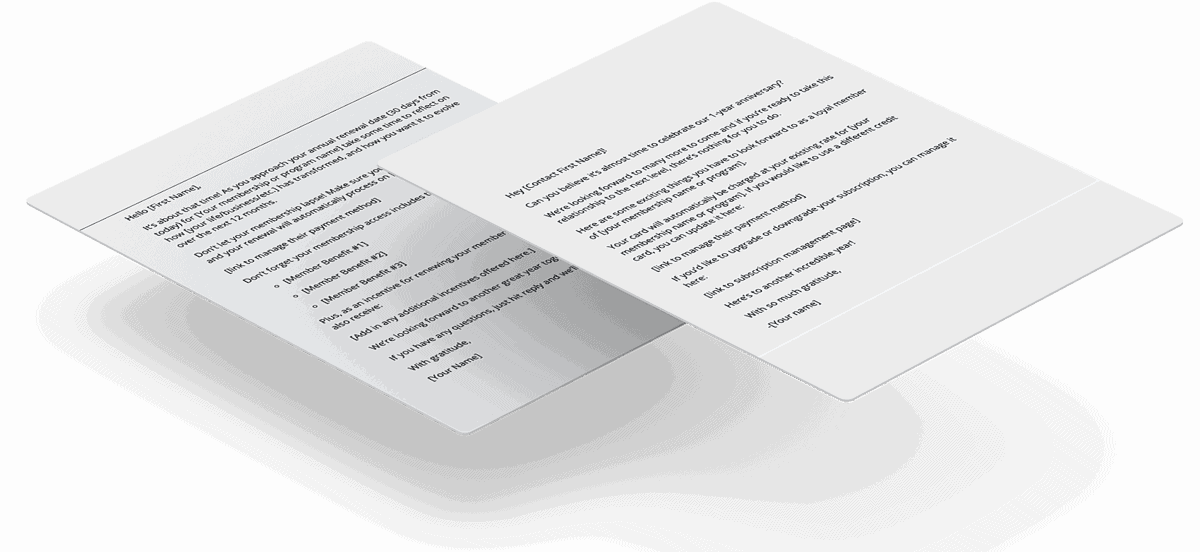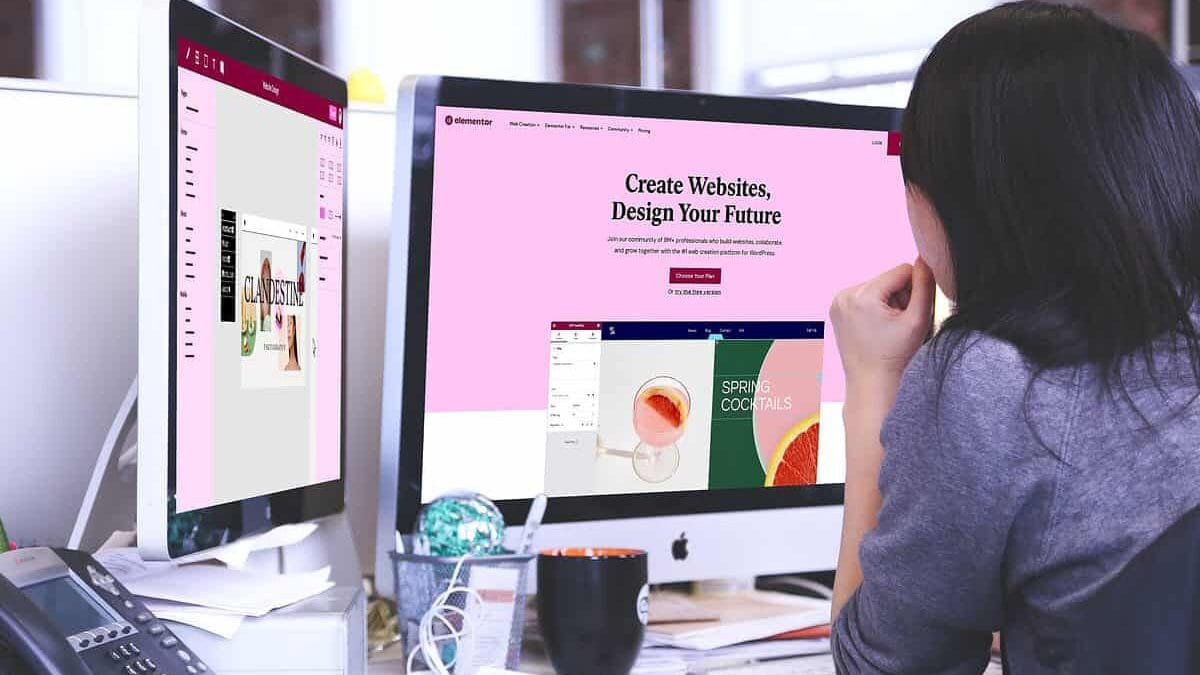Introduction and Overview: Building Effective Webinar Funnels
When done right, webinar funnels can become your most powerful tool for attracting qualified leads who are genuinely interested in your online courses and digital products. As someone who’s helped hundreds of course creators optimize their funnels, I’ve seen firsthand how the right webinar strategy can transform a struggling course into a thriving educational business.
Think of your webinar funnel as a carefully crafted journey that guides potential students from their first interaction with your brand to becoming engaged participants in your courses. It’s not just about getting people to register for your webinar – it’s about creating a seamless experience that demonstrates your expertise, builds trust, and naturally leads to course enrollments.
The key components of a successful webinar funnel include a compelling landing page, strategic email sequences, the webinar content itself, and well-timed follow-up communications. Each element needs to work in harmony with the others, creating a cohesive experience that speaks directly to your ideal student’s needs and challenges.
I’ve noticed that many course creators focus solely on driving traffic to their webinar registration page without considering the entire journey. This approach often leads to high registration numbers but poor conversion rates. Instead, we need to think about qualification at every step – from the messaging on your landing page to the content you deliver during the webinar.
Throughout this guide, we’ll explore proven strategies for creating webinar funnels that not only attract leads but qualify them effectively. You’ll learn how to craft compelling webinar topics that resonate with your target audience, design registration pages that convert, and develop follow-up sequences that nurture relationships with potential students.
We’ll also dive into the technical aspects of setting up your funnel, including choosing the right webinar platform, integrating it with your course delivery system, and implementing tracking mechanisms to measure your success. By the end of this guide, you’ll have a clear roadmap for creating a webinar funnel that consistently generates quality leads for your online courses.
Foundation Concepts and Planning
First, you need to clearly define your ideal participant profile. This goes beyond basic demographics – think about their current challenges, aspirations, and what transformation they’re seeking. For example, if you’re teaching advanced photography, your ideal participant might be an intermediate photographer who wants to start booking paid clients but feels stuck with technical limitations.
Next, craft your webinar topic to serve as a perfect bridge between your audience’s current pain points and your paid course solution. Your webinar should deliver genuine value while naturally highlighting the benefits of your full program. For instance, if your course teaches comprehensive email marketing, your webinar might focus on “3 Email Sequences That Double Your Open Rates” – providing actionable tips while demonstrating your expertise.
| Feature | Benefit | Use Case |
|---|---|---|
| Drip Content | Increases engagement | Course progression control |
| Quiz & Assessments | Validates learning | Student progress tracking |
| Certificates | Motivates completion | Professional development |
| Community Access | Builds loyalty | Student interaction |


The structure of your webinar funnel needs careful consideration. Map out each touchpoint, from the initial advertisement or social media post to the thank-you page and follow-up sequence. Consider creating multiple registration pathways – some people might find you through social media, others through paid ads, and some through partner referrals. Each pathway should maintain consistent messaging while speaking to that specific audience’s context.
Your registration page deserves special attention as it’s the first major conversion point in your funnel. Focus on creating compelling benefits-driven copy that speaks directly to your ideal participant’s desires. Include social proof elements like testimonials or results from previous students, and keep the registration process simple and straightforward.
Planning your follow-up sequence is equally crucial. Many course creators focus solely on the webinar content but neglect the nurture sequence that follows. Design a series of targeted emails that address common objections, share success stories, and provide additional value. Consider offering a time-sensitive bonus or special pricing to encourage prompt action.
| Plan | Features | Best For |
|---|---|---|
| Starter | Basic course creation | New course creators |
| Professional | Advanced features + integrations | Growing businesses |
| Enterprise | Full customization + support | Large organizations |
Finally, establish clear metrics for measuring success. Beyond basic registration numbers, track show-up rates, engagement during the webinar, conversion rates to your course, and the quality of students who enroll. These metrics will help you refine your funnel over time and identify areas for improvement. Remember, a smaller group of highly engaged participants often leads to better results than a large audience of casual observers.
Step-by-Step Implementation Guide
When done right, building a webinar funnel is like creating a well-orchestrated symphony where each element plays its crucial part in converting viewers into qualified leads. Let’s break down the implementation process into manageable phases that you can tackle systematically.
Start by defining your ideal lead profile and crafting a compelling webinar topic that addresses their specific pain points. Your webinar title should promise a clear, valuable outcome while remaining realistic. For example, instead of “Make Millions Online,” opt for something like “How to Launch Your First Online Course and Secure 20 Founding Members in 30 Days.”
Next, design your registration page with conversion in mind. Include social proof elements like testimonials from previous participants or results from past students. Keep the form fields minimal – asking for too much information at this stage can deter potential registrants. Typically, name and email are sufficient, though you might add one qualifying question if absolutely necessary.
Create a strategic email sequence that builds anticipation before the webinar. Send at least three pre-webinar emails: a confirmation immediately after registration, a value-packed content piece 2-3 days before the event, and a reminder 24 hours before start time. Each email should include a unique piece of valuable content that primes attendees for your webinar’s main message.
Develop your webinar content structure using the 80/20 rule: 80% valuable content and 20% soft selling. Begin with a strong hook that captures attention in the first five minutes. Share your journey briefly, but focus primarily on delivering actionable insights. Include 3-4 major teaching points, each supported by concrete examples or case studies. Plan for interactive elements like polls or quick exercises to maintain engagement.
Your offer presentation should feel like a natural progression from the content you’ve shared. Create urgency through time-limited bonuses rather than aggressive tactics. Consider offering a fast-action bonus for those who sign up during the webinar, but ensure it’s valuable enough to motivate action without appearing manipulative.
Post-webinar follow-up is crucial for lead nurturing. Prepare two different email sequences: one for attendees and another for registrants who didn’t attend. For attendees, reference specific moments from the webinar and expand on questions asked during the Q&A. For no-shows, provide a limited-time replay access and highlight key takeaways they missed.
Finally, implement tracking systems to measure key metrics throughout your funnel. Monitor registration rates, attendance rates, engagement levels during the webinar (through polls and chat activity), and conversion rates for your offer. Use this data to refine your approach in future webinars, testing different elements like webinar times, email sequences, and offer structures to optimize your results.
Advanced Strategies and Techniques for Webinar Funnel Success
When done right, your webinar funnel can become a predictable lead-generation machine that attracts highly qualified prospects. Let’s dive into some sophisticated strategies that go beyond the basics to help you create a truly exceptional webinar experience that converts.
Start by implementing a pre-webinar engagement sequence. Rather than simply sending reminder emails, create a mini-content series that primes attendees for your presentation. Share a quick-win video tutorial, a valuable worksheet, or an industry insight report. This approach builds anticipation while demonstrating your expertise before the main event.
Your registration page deserves special attention. Instead of using generic templates, develop a compelling narrative that speaks directly to your ideal client’s pain points. Include social proof elements like specific results from past participants, and consider adding a short video introducing yourself and previewing the valuable insights they’ll gain. This personal touch can boost registration rates by 20-30%.
During the webinar itself, leverage pattern interrupts to maintain engagement. Every 10-15 minutes, introduce an interactive element – whether it’s a poll, a quick exercise, or a thought-provoking question. These moments keep attendees actively participating and help identify your most engaged prospects. Consider using breakout rooms for brief peer discussions, which can create powerful social proof moments.
The post-webinar sequence is where many creators leave money on the table. Create multiple follow-up paths based on attendee behavior. Those who stayed until the end and engaged frequently should receive a more direct sales approach, while partial viewers might need additional nurturing content. Consider offering a time-sensitive action-taker bonus that genuinely adds value to your core offer.
Implement a retargeting strategy for those who registered but didn’t attend. Create a condensed “highlights” version of your webinar, focusing on key takeaways and success stories. This approach can recover up to 30% of no-shows and convert them into qualified leads. For more detailed strategies on this topic, check out our guide on creating high-converting webinar funnels.
Consider implementing a “micro-commitment” strategy throughout your funnel. Instead of jumping straight to your core offer, guide attendees through smaller, easier-to-say-yes-to steps. This might include downloading a resource, joining a private community, or participating in a short challenge. Each positive interaction increases the likelihood of eventual conversion.
Common Challenges and Solutions in Webinar Funnel Creation
When building webinar funnels, you’ll likely encounter several hurdles that can impact your lead generation success. Let’s explore these challenges and their practical solutions to help you create more effective funnels that consistently attract quality prospects.
One of the most prevalent issues is low registration-to-attendance rates. Unfortunately, many creators focus solely on collecting registrations without implementing proper engagement strategies. To combat this, establish a pre-webinar email sequence that builds anticipation. Send value-packed “preview” content, share participant success stories, and create worksheet materials that attendees can download before the session.
Technical difficulties can derail even the most well-planned webinar. Combat this by having a dedicated tech support person during live sessions, creating a detailed technical setup checklist, and running full rehearsals using your exact webinar setup. Always have backup slides accessible offline and prepare pre-recorded segments for crucial content in case of connection issues.
Lead quality often suffers when your messaging isn’t properly aligned with your target audience. To attract better-qualified leads, be explicitly clear about who the webinar is for and what specific problems it solves. Include qualifying questions in your registration form, but keep it brief – three targeted questions are usually sufficient to screen participants without creating friction.
Many course creators struggle with converting webinar attendees into paying customers. If you’re feeling stuck with low conversion rates, examine your offer transition. The key is creating a natural bridge between your free content and paid solution. Structure your webinar content to demonstrate expertise while intentionally leaving strategic gaps that your paid offering fills.
Audience engagement during webinars frequently drops after the first 15-20 minutes. Combat this by incorporating interactive elements every 7-10 minutes. Use polls, quick exercises, chat questions, or brief breakout sessions. These engagement points keep participants active and provide valuable data about their needs and challenges.
Follow-up sequences often fall flat because they’re too generic. Create segmented follow-up paths based on attendee behavior – one track for those who stayed until the end, another for partial attendees, and a third for no-shows. Personalize these sequences with specific references to participant interactions and questions from the webinar.
Best Practices and Optimization
When done right, your webinar funnel can become a predictable source of qualified leads who are genuinely interested in your course offerings. The key lies in continuous optimization and following proven best practices that enhance both registration and conversion rates.
Start by creating a compelling registration page that clearly communicates the value proposition. Your headline should address a specific pain point, and the description should outline 3-4 concrete takeaways participants will gain. For example, instead of promising “Instagram marketing tips,” specify “Learn the exact Instagram Reels strategy that helped me gain 10,000 followers in 60 days.”
Email sequences are crucial for maximizing attendance rates. Set up a minimum of three reminder emails: one day before, one hour before, and ten minutes before the webinar. But don’t just remind them – build anticipation by sharing a success story or teasing a valuable insight they’ll learn. Consider sending a worksheet or quick-start guide beforehand to increase engagement.
During the webinar, structure your content to maintain engagement while qualifying leads. The first 15 minutes should establish your credibility and create emotional connection through storytelling. The middle section should deliver actionable value, while the final third can transition into your offer. Remember to include interactive elements like polls and Q&A sessions to keep participants active.
Follow-up is where many webinar funnels fall short. Create separate email sequences for attendees and no-shows. For attendees, reference specific moments from the webinar and address common objections they might have about your offer. For no-shows, provide a limited-time replay access and highlight key moments they missed. You can learn more about creating effective follow-up sequences in this comprehensive guide on creating high-converting webinar funnels.
Track key metrics beyond just registration numbers. Monitor engagement rates during specific segments, analyze chat activity, and measure replay viewing duration. Use tools that allow you to identify which participants asked questions or engaged with polls, as these often indicate higher interest levels. Consider implementing a lead scoring system based on these engagement markers to prioritize your follow-up efforts.
Remember to regularly test and optimize different elements of your funnel. A/B test your registration page headlines, experiment with different email subject lines, and try various webinar time slots to find what works best for your audience. Small improvements in each stage can lead to significant overall conversion rate increases.
Case Studies and Examples: Real-World Webinar Funnel Success Stories
Let’s dive into some illuminating case studies that showcase how different businesses have mastered their webinar funnel strategies. When done right, these funnels can transform casual viewers into enthusiastic buyers, and these examples will show you exactly how it’s done.
Take Sarah, a business coach who was struggling with lead quality. Her initial webinar funnel attracted plenty of registrants, but only 2% were converting to sales. By implementing a pre-qualification quiz before the webinar registration, she increased her conversion rate to 15%. The quiz asked about business revenue, growth goals, and investment readiness, effectively filtering out tire-kickers and attracting serious prospects.
Another fascinating example comes from Tech Academy, an online coding bootcamp. They noticed that their standard one-hour webinar wasn’t giving potential students enough time to understand their comprehensive program. Their solution? They broke their webinar into a three-part series, with each session building upon the last. This approach increased their engagement rates by 47% and doubled their course enrollment rates.
For comprehensive guidance on course creation platforms, see this detailed analysis from WP Tavern.
Consider also the case of wellness entrepreneur Maria, who was facing high no-show rates for her webinars. She implemented a simple but effective nurture sequence: three value-packed emails before the webinar, each containing a micro-teaching moment. This strategy reduced her no-show rate from 65% to just 28%, while simultaneously warming up her audience for the eventual course offer.
One of the most impressive transformations I’ve witnessed was with a language learning platform. They struggled with a lengthy sales cycle until they restructured their webinar funnel to include a low-ticket offer ($27 starter kit) immediately after the webinar. This created an initial buyer relationship, making it easier to upgrade these customers to their premium $997 language program later. Their overall revenue increased by 156% within three months.
A professional development company found success by incorporating social proof differently throughout their funnel. They added video testimonials to their registration page, featured live student results during the webinar, and included success story snippets in their follow-up emails. This comprehensive social proof strategy increased their webinar show-up rate by 34% and boosted sales conversions by 28%.
The key takeaway from these case studies is that successful webinar funnels aren’t built on guesswork. They’re carefully crafted systems that address specific audience needs and pain points at every stage. Whether it’s through strategic pre-qualification, multi-part series, enhanced engagement tactics, or clever pricing strategies, there’s always room to optimize and improve your funnel’s performance.
Future Considerations and Conclusion
As we look ahead at the evolving landscape of webinar funnels, it’s crucial to recognize that technology and audience expectations continue to shift rapidly. When done right, your webinar funnel can become a sustainable lead generation machine that adapts and grows with your business. The key is staying flexible and responsive to changing market dynamics while maintaining the core elements that make webinars effective.
One emerging trend worth considering is the integration of AI-powered chat solutions during webinar sessions. These can help manage basic participant questions, allowing you to focus on delivering high-value content and addressing more complex inquiries. Additionally, consider implementing micro-webinars – shorter, more focused sessions that respect your audience’s time while still delivering meaningful value.
Data analytics will play an increasingly important role in funnel optimization. Beyond basic conversion metrics, start tracking engagement patterns, question types, and drop-off points to refine your presentation. Consider implementing heat mapping tools to understand how participants interact with your webinar interface and registration pages. This data-driven approach helps you make informed decisions about content structure and delivery.
Mobile optimization is no longer optional – it’s essential. With more professionals joining webinars from their phones, ensure your registration process, reminder emails, and webinar platform are fully mobile-responsive. Test your funnel thoroughly across different devices and screen sizes to provide a seamless experience for all participants.
Looking at long-term sustainability, consider creating a content repurposing strategy. Your webinar content can be transformed into blog posts, social media snippets, podcast episodes, and short-form videos. This maximizes your return on investment while providing multiple touch points for potential leads to discover your expertise.
Remember that building an effective webinar funnel is an iterative process. Start with a solid foundation, measure results consistently, and make data-informed adjustments. Focus on delivering genuine value and building authentic connections with your audience. By maintaining this balanced approach and staying attuned to emerging trends, your webinar funnel will continue to generate quality leads well into the future.







